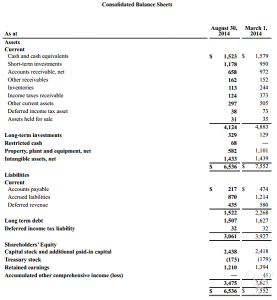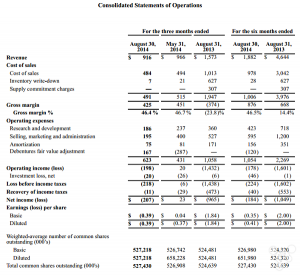About a week ago, Blackberry launched its newest flagship, the Blackberry Passport. A smartphone aiming especially for business and enterprise markets. It is the first product launched by the new CEO John Chen. Will this act be Blackberry’s end game or will this lead to the prelude of its reborn?
On its launch day, Blackberry was able to get up to 200,000 preorders for it’s freshly launched Passport model in HOURS, which were very promising results for the company. However, as the world today is scattered by Android and iPhone users, more is expected from Blackberry to fight its way through.
“This is by far the most depressing BlackBerry analysis you’ll read this week”
http://bgr.com/2014/09/29/blackberry-passport-launch-sales/
The blog above used Gassée’s full analysis to come to a similar conclusion stating that John Chen is eventually going to sell the company, if worse, in parts perhaps. However, the article also says that the company is doing better since failing to find a buyer during summer 2013. Recent financial statement shows a decrease in the budget of loss(losing less money than before). Although Blackberry has been running a budget deficit for the past three months (with a net loss of $210,000,000), it was 78.5% lower than this time last year. As a result, the stock price rose by 5%.
It has no doubt that most of the rising performance came from Blackberry’s new CEO, John Chen. After taking up the post of being CEO, John reconstructed the company’s human resources, refocusing all the company has on enterprise mobile communication and security rather than competing directly with Apple and other android phone manufacturers. John is confident about the reform and believes the firm is able to start regenerating profit in 2016.
So what makes it possible for Blackberry to do that? Its new strategy is definitely one of the factors. As we all know, Blackberry is famous for its software security, keyboard and world class (until everyone caught up) PIM services. Blackberry now mainly focuses on governments and organizations, providing them with their exclusive mobile communication and security services, which is a focus (differentiation) strategy. After years of competition with Apple, Samsung, Google HTC and such, Blackberry realizes that it’s impossible to compete directly and push Apple off the table. By offering different and exclusive value propositions and aiming narrowly on governments and business organizations, Blackberry is able to change the game in the industry by repositioning itself at the top of the ladder of a variety of new priorities established. Just like the Milkshake marketing, Blackberry was able to find out what its consumers hire their devices for. It wasn’t because Blackberry was cool and fancy like Apple’s iPhone (at least not anymore or very unlikely), it was it could offer the consumers an exclusive service that Blackberry’s competitors does not have such advantage in and may not be capable of offering with such quality. This provides Blackberry with the capital to win the fight against consumer minds with Apple’s iPhone and Android phones at top prior in some of the most pervasive categories.
On the other hand, one of Blackberry’s strengths is that is has it’s own Blackberry OS for its devices. This means the company has complete (except for android app simulation part) control over its devices. And with the comparison of Android, this could be a huge advantage against Android users leaving only with Apple at top.
Since Android is an open source system, one of its deadly weaknesses is its “fragmentization”. Since any smartphone manufacturer is allowed to launch their devices with customized Android running in it, app developer would have to design apps compatible with all sorts of screen sizes and even operating background, different button layouts, ppi (pixel per inch) of screens and there’s also an awful lot of debugging needed to do. The other factor causing “fragmentization” would be the pain in updating. Since the systems are customized by different manufactures and even different tele-carriers, the updating process goes from Google announcing the update and releasing packages allowing secondary customizers (different manufactures like Samsung Electronics or carriers like AT&T) to customize. Then each secondary party adopts the changes and selects a few models of devices and gets working on them. After at least a month of work, the newest flagships gets the update release from their second party. This process may take from 39 to 180 days, depending on how popular the device is. This is the main reason why the newest Android 4.4 Kitkat only occupies 13% of all android phones. In contrast, all Apple’s devices gets their update immediately after release, and iOS 8 is already installed in over 87% of Apple devices . This is because Apple has full control over the iOS and it capable of releasing for all models of devices at the same time. Fortunately, just like Apple, Blackberry also has its own advanced smartphone operating system and in the future, Blackberry should make full advantage of that. With further promotions on public awareness, this should help it climb up the ladder and compete directly with Apple.
There are still many other aspects that makes Blackberry capable enough to retain its profitability and market share. More will be coming soon 😀 I need to work on my mid-term and HW, I edit when I have time.
Financial Statement Source: http://tech.feng.com/2014-09-26/Sword_pay_blackberry_new_machine_200_596218.shtml


